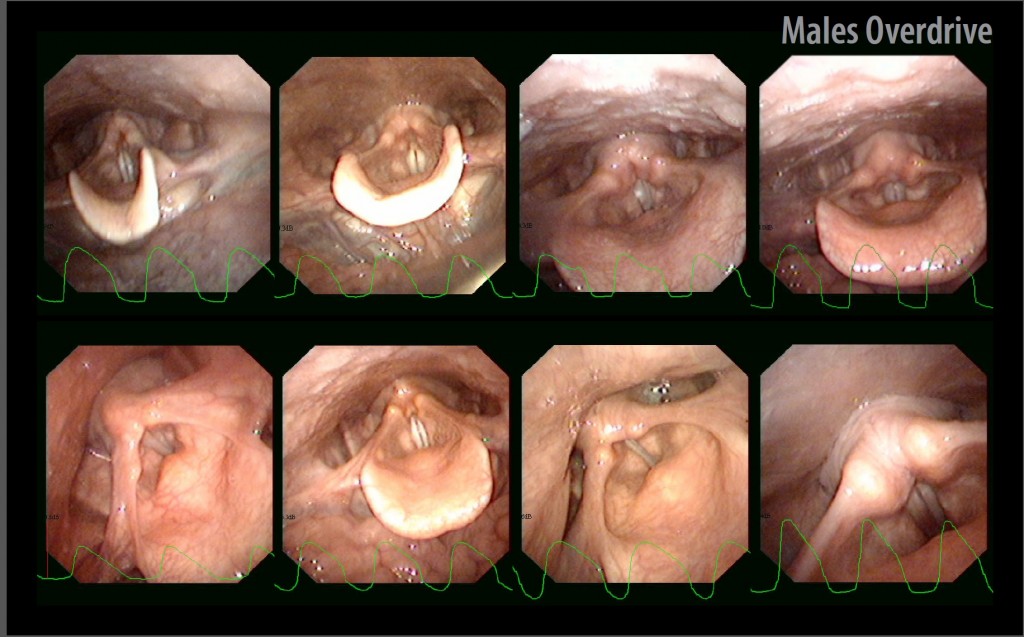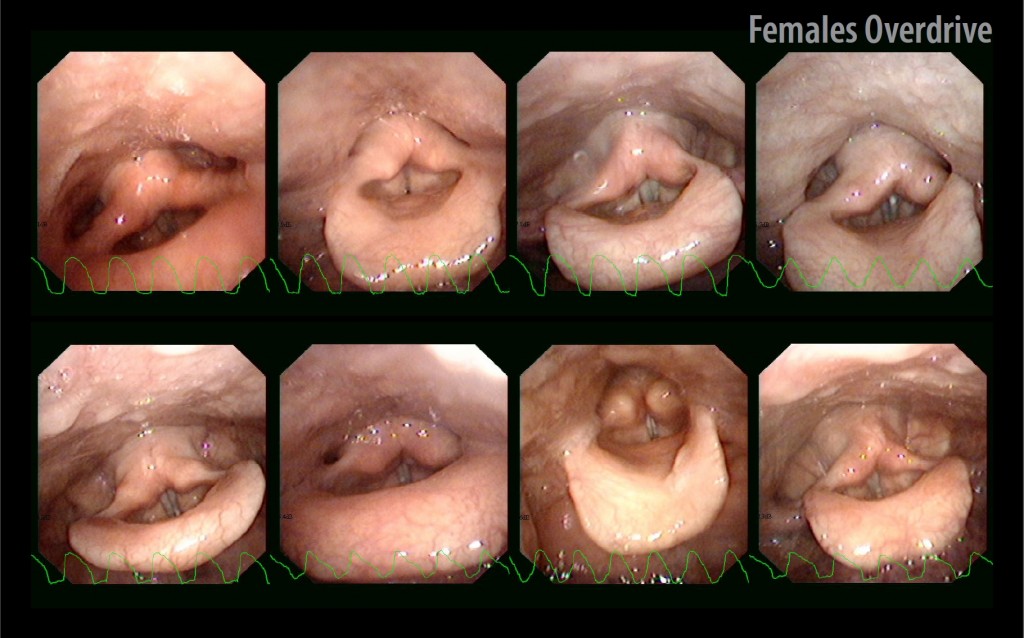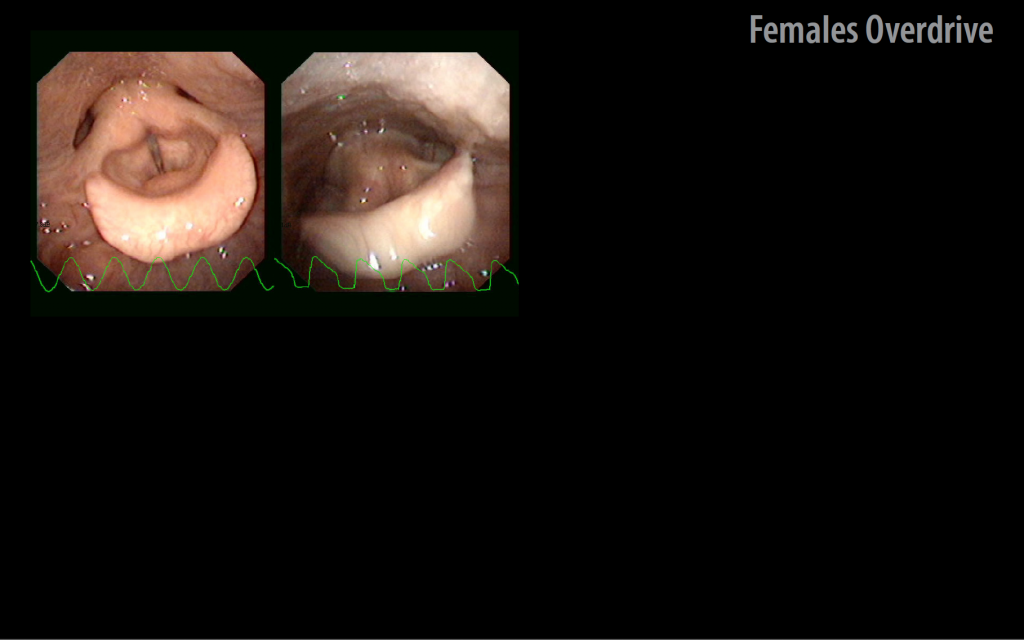Visual & waveform recognition on Overdrive on 18 larynxes
On the following 8 male and 10 female stills images from the videos both the laryngeal gestures and the waveform in Neutral with air are seen. The stills are extracted from the videos from the endoscopy study performed by Julian McGlashan and Cathrine Sadolin at CVI in Copenhagen in June 2007. The stills are extracted from the videos in the manner previously described. (See Laryngeal recognition in Overdrive).
When looking at these 18 stills certain patterns are seen in the laryngeal gestures and the laryngograph waveform within each mode
Notice the front and the back of the laryngeal opening approaching each other, making the opening of the larynx much more narrowed and creates a sharper angle between the arytenoids and the aryepiglottic fold, and also a sharp angle between the aryepiglottic fold and epiglottis. The cuneiforms are also rolled in more.
Also notice the Overdrive waveform, which shows a steep onset and a fairly long closure of the vocal folds and sometimes a roll off with a little knee. The steep onset indicates that the vocal folds are coming very rapidly together and stay together for longer, so they are more closed than open during a vibratory cycle. This, corresponds nicely with the loud volume often used in Overdrive.
The Laryngeal gestures and the laryngograph waveform are more to be seen as patterns of progression from mode to mode, rather than absolutes. The larynx, the laryngeal gestures and the waveforms did often differ from person to person, but the patterns often changed in the same directions. The progression in the patterns can be used as guidelines on how to identify the modes within each singer.



